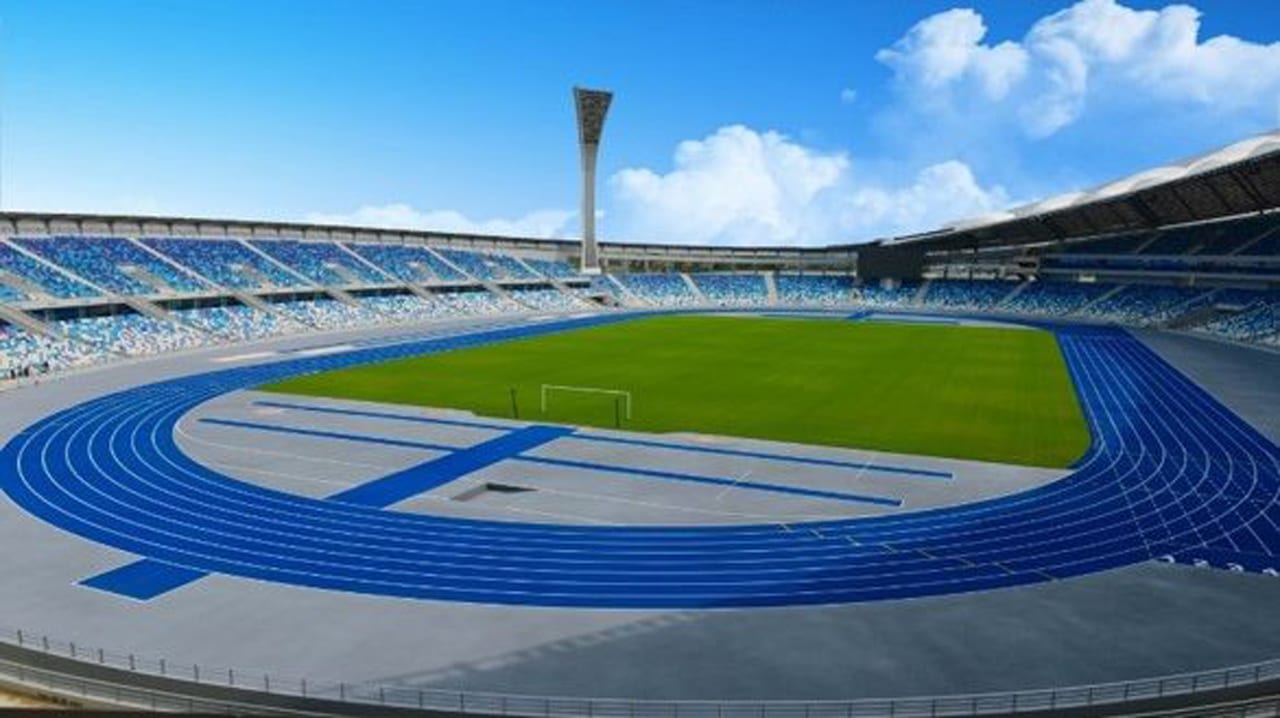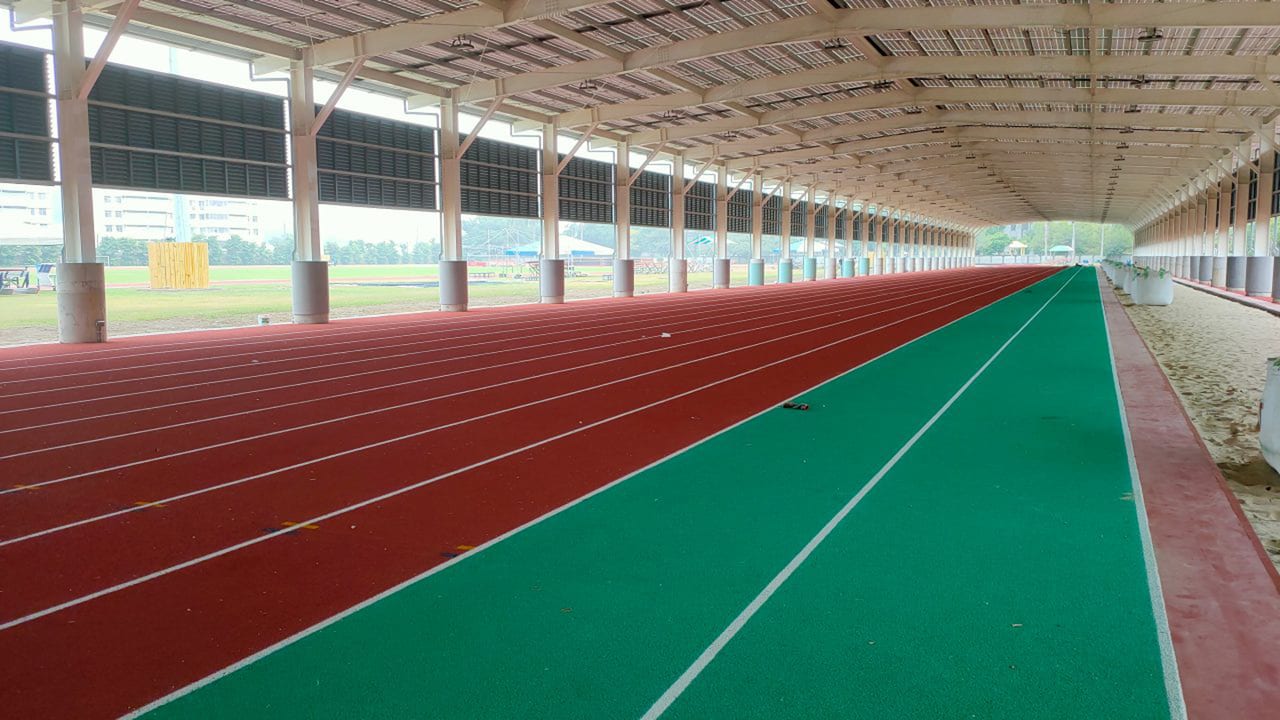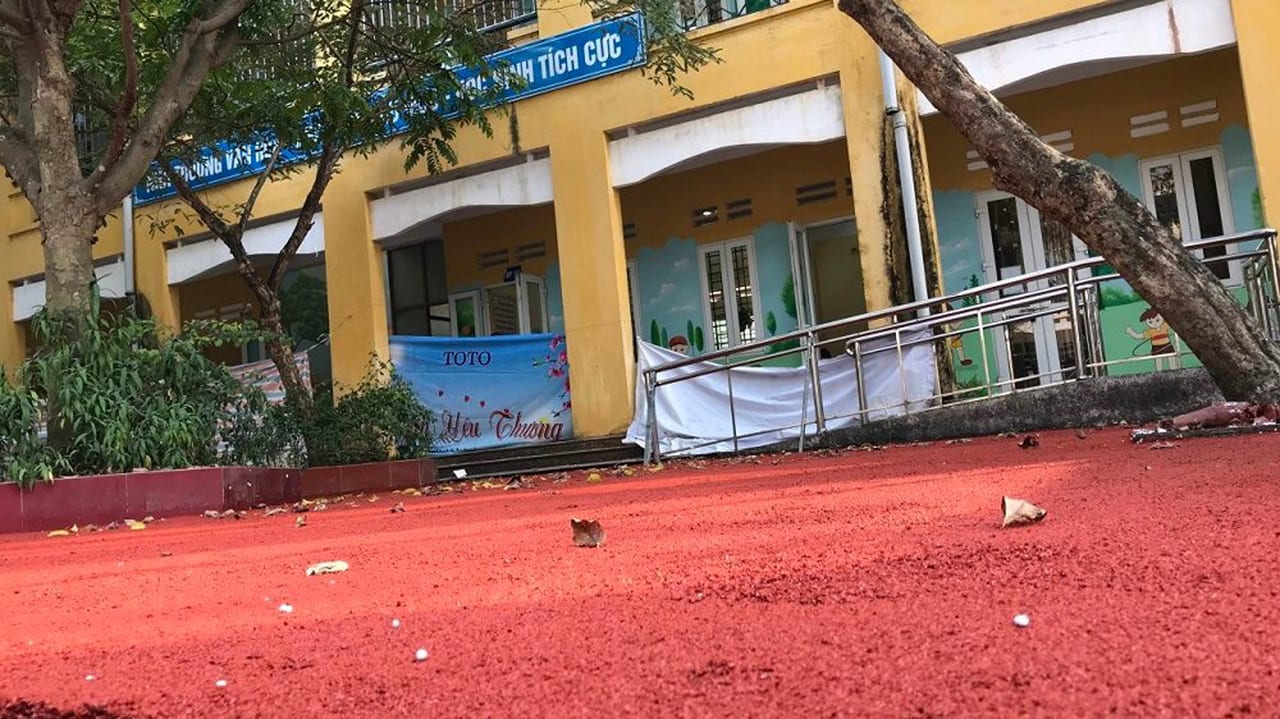STYLE WATCH 2021
Hitting the Ground Running with Performance Materials
How a trend in performance materials is leading to higher-performance sports flooring and beyond
The fitness trail by the National Olympic Sports Center in Beijing, China, services more than two million visitors annually. The 2.5-kilometer trail, paved with BASF’s solutions can withstand harsh winter conditions in of -10 degrees. The trail provides sports enthusiasts with maximum impact absorption, protecting their knee joints and ensuring a safer exercise environment. Photo: BASF.
The global sports flooring market is reportedly expected to be worth over US$19.5 billion by 2030. Part of this demand will of course be for safer and more resilient flooring. The shopping list, however, may well extend much further to a demand for qualities better associated with ‘performance materials’ – qualities such as noise damping, improved shock absorption and even athlete performance enhancement.
The trend towards higher-performance sports flooring has been gathering pace for a number of years. It is for this reason that rubber flooring and similar synthetics have gained popularity as gym flooring, replacing traditional wood and other hard sports floors. The more elastic flooring is better able to shock-absorb against falls and high-impact exercise, as well as dampen noise – gyms and sports facilities are notoriously noisy places.
Protective sports flooring – an overview of two current materials
Protective elastic flooring has become increasingly the norm, with many advantages – although there are still downsides to the earliest materials used.
Natural rubber appears by far the most popular in new sports flooring. It is durable, non-slip, stain resistant, shock- and sound absorbent, and can be made from entirely recycled material, giving it a good sustainability rating.
A close rival is polyurethane. This offers the same qualities as rubber, with improvements to durability and load-bearing strength. A useful comparison would be to look beyond flooring to the automotive industry, at the performance capabilities of rubber vs polyurethane tires – specifically, load capacity and wear and abrasion resistance. It is found that a polyurethane tire easily supports twice the weight a rubber tire is able to – indicating a polyurethane floor would bear up better than rubber in the long run under heavy gym equipment. Meanwhile, polyurethane tires resist wear and tear excellently, and will last four times as long as rubber tires – suggesting polyurethane flooring would display superior durability under constant hard-wearing use by athletes.
However, rubber absorbs vibrations and dampens noise more effectively than polyurethane flooring. Rubber flooring would typically cost less than polyurethane, but polyurethane would last far longer, balancing out against cost.

Yuecheng Courtyard Kindergarten in Beijing, China. Acknowledged by the industry as one of 2019’s “Most Anticipated buildings in China,” the sports field and pavement of the over 300-year-old kindergarten was paved with 15-mm-thick DPU sports protection flooring. Photo: BASF.
Material improvements for sports flooring, on the cusp of a new trend
As the sporting world is forever striving to push the boundaries of performance while maintaining the safety of athletes, it looks to achieve this with the help of improvements in sporting equipment.
All too often disregarded underfoot, sports flooring is nonetheless very much in the category of sporting equipment – now more so than ever before. Sports flooring now expected not only to be safe to use, but to in fact provide additional sports safety features, such as good shock absorption to minimise physical impact and injury.
We are also beginning to see a trend towards flooring being able to enhance athletes’ performance. This has come about through the invention of a new material in 2007: Infinergy®.
Commercialised since 2013, Infinergy® is the world’s first expanded thermoplastic polyurethane (E-TPU). The closed-cell, elastic particle foam invented by chemical innovators BASF combines the properties of conventional TPU with the advantages of foams – making it as elastic as rubber but lighter.
Already incorporated in some top brand sports equipment (Dunlop Sonic Core™ squash and tennis racquets, Ergon bicycle saddles) for its unique compression technology, the material provides a better-performing and more lightweight alternative to rubber flooring.
Unlike rubber, Infinergy® does not lose its resilience even under a continuous load or stress, nor over a wide range of temperature and weather conditions. Rubber surfacing may be prone to contract and stiffen in cold weather, potentially leaving gaps in perimeters—whereas dynamic mechanical analysis shows Infinergy® stays elastic up to minus 20°C (minus 4°F). So, as outdoor track-and-field flooring, the E-TPU material has the advantage of being able to retain its performance integrity for decades, even in extremely hot or cold climates – conditions that would deteriorate rubber flooring, by comparison.
The 60,000-square-meters stadium in Hainan, China, can host up to 50,000 spectators for international and national competitions, in addition to various cultural activities. The runways for the main field and sub-field constructed with 13 mm-thick Infinergy solutions, providing high rebound and improved performance for all athletes. Photo: BASF.

Infinergy® is currently used for gym flooring, track surfaces and children playgrounds, with potential for far wider flooring applications. As a flooring structure, it provides high rebound and excellent impact absorption, helping athletes achieve better performance while lowering risks of exercise-related injuries for children.
BPA-free, easily customisable for colour, thickness and permeability – and with low project and maintenance cost due to fast curing – Infinergy® has been successfully introduced as sports and playground flooring in dozens of schools across China. This includes a benchmark high-performance running track for the Shanghai American School.
Robust and durable (the material is used to make chewable toys for big dogs), another advantage Infinergy® provides is that it is 100% recyclable to its original performance qualities. Plus, creator BASF is strong on sustainability standards – for instance, BASF audits raw material suppliers on sustainability standards, and expects their transparency and commitment to BASF’s Product Carbon Footprint tracing and certification program. This means using Infinergy® in flooring could potentially help companies meet climate and sustainability goals.
Developed specifically to help Olympic athletes achieve improved performance and endurance, the soft running track in Kaohsiung City, Taiwan, is softer than IAAF standards and has a thickness of 40 mm. Photo: BASF.

Beneficial underfoot
Infinergy®’s performance qualities have found crucial application in other surfaces underfoot. It is increasingly used in treadmill decks, as the material not only absorbs shock and returns it as useful energy to improve running performance, but also dampens noise – so treadmill users can enjoy a run in the gym or at home without the pounding footfall disturbing neighbours or those nearby.
Regardless of running speed and style, Infinergy®’s resilience under dynamic loads not only reduces stress to runners’ joints, but indeed returns a useful little “boost” of rebound energy underfoot to the runner. So it is not surprising the material has found its way into the design of current-generation high-performance footwear – from professional running shoes to safety workshoes, trekking boots, and beyond. In industrial footwear and safety boots, Infinergy®’s unique compression technology – particularly, its cushioning and rebound – importantly helps reduce fatigue for those who have to stay on their feet throughout the workday.
Whether used in flooring or insoles, Infinergy®’s material qualities have made it a game-changer underfoot.
This playground in Hanoi, Vietnam, supports over 70 students with disabilities, providing them with outdoor toys and play areas to help children recover from illness and develop physical and cognitive skills. Photo: BASF.

